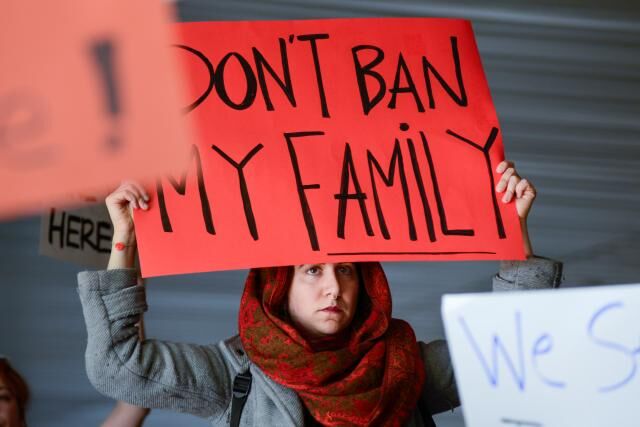On President Trump’s immigration ban
Protests broke out in airports across the United States after it was announced that President Donald Trump signed an executive order titled “Protecting the Nation from Foreign Terrorist Entry into the United States.” The order limits the entry of Syrian refugees and curtails the admission of citizens from seven Muslim-majority countries in the Middle East and Africa, regardless of immigration and visa status.
EXECUTIVE DECISION
President Trump’s directive effectively suspended the refugee program of the United States for 120 days, indefinitely tabled Syrian refugees, and limited the entry of citizens from Iraq, Iran, Libya, Somalia, Sudan, Syria and Yemen for 90 days. Following the announcement, the President spoke of wanting to keep “radical Islamic terrorists” out of the country, citing the September 11 attacks as evidence. What is noticeable, however, is that the perpetrators of those events originated from Saudi Arabia, the United Arab Emirates and Lebanon, not from any of the states listed in the executive order.
In statements posted on Facebook and Twitter, President Trump argued that the order was not about religion, but rather about national safety and the need for “stronger borders” and “extreme vetting.” This is in contrast with the statement of former New York Mayor and current advisor Rudy Giuliani, admitting that it was indeed a “Muslim ban” in its origins. Initially, the U.S. Department of Homeland Security stated that permanent residents would not be exempt from the ruling; however, White House Chief of Staff Reince Priebus later clarified that green card holders would be allowed to enter the country. The issue remains confusing, causing many travelers to be detained and hundreds to be stranded in airports.
WIDESPREAD INDIGNATION
Mere hours after it was announced that President Trump signed the executive order, protests erupted at major airports across the United States, including New York City, Los Angeles and Houston. Several Democratic politicians, namely Senate Minority Leader Chuck Schumer and Massachusetts Senator Elizabeth Warren, were decrying the immigration ban. One of the main points of the demonstrations was the fact that President Trump did not ban citizens from countries with which he maintains business ties, such as Saudi Arabia.
After the directive was released the American Civil Liberties Union (ACLU) filed a lawsuit, arguing that the order violated due process. Federal New York Judge Ann Donnelly issued a stay, ruling that those detained under the provisions of the order and people in transit could not be deported. The decision did not cover those who were intending to fly to the country. As of January 31 2017, judges in five states, including Washington and Pennsylvania, have issued stays.
On January 30, acting Attorney-General Sally Yates, an Obama appointee, announced that the Justice Department would not be defending the executive order in court, arguing that it was not lawful, and that defending it would not be consistent with the “institution’s solemn obligation to always seek justice and stand for what is right.” Hours later, she was fired from the cabinet for “refusing to enforce a legal order designed to protect the citizens of the United States,” and “[betraying] the Department of Justice.”
Canada has not been spared from the effects of the executive order. At a recent conference in Montreal, McMUN, many participants from the United States found out that they would not be allowed to return. In attendance was UTSG student Angela Hou, who described the general atmosphere as silent and emotional. She noted that the conference organizers were responsive and reached out to the participants affected by the ban.
At time of publishing, a lawsuit by Washington State against the President has succeeded in the 9th U.S. Circuit Court of Appeals at a vote of 3-0. The world awaits a decision by the Trump administration regarding the possibility of appealing the ruling to the Supreme Court of the United States.
Image curtesy of Reuters.
